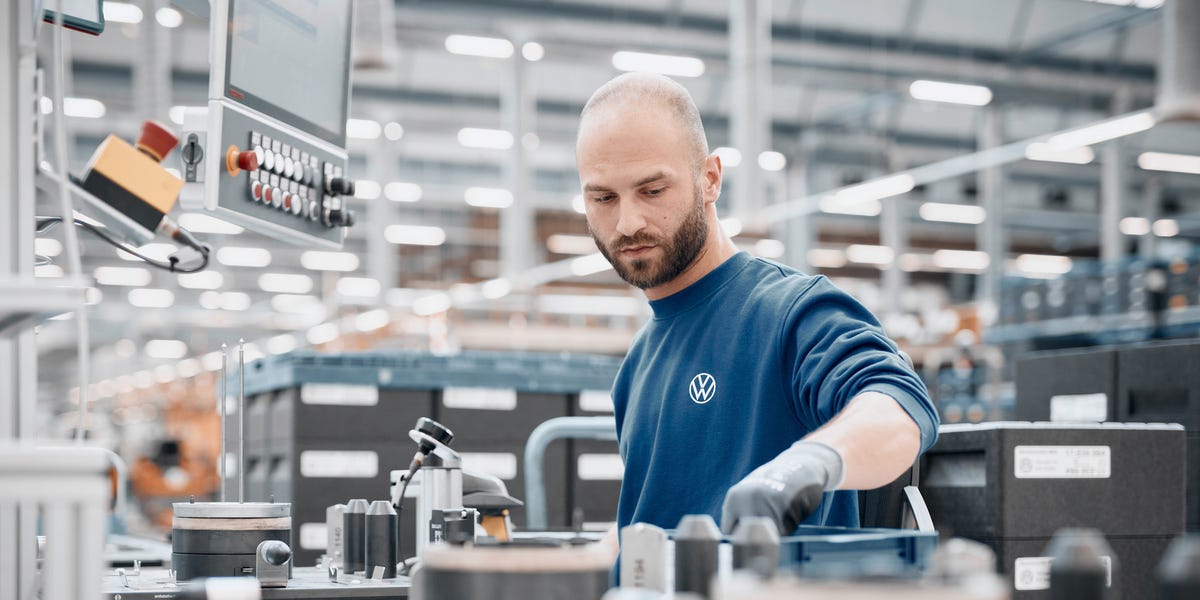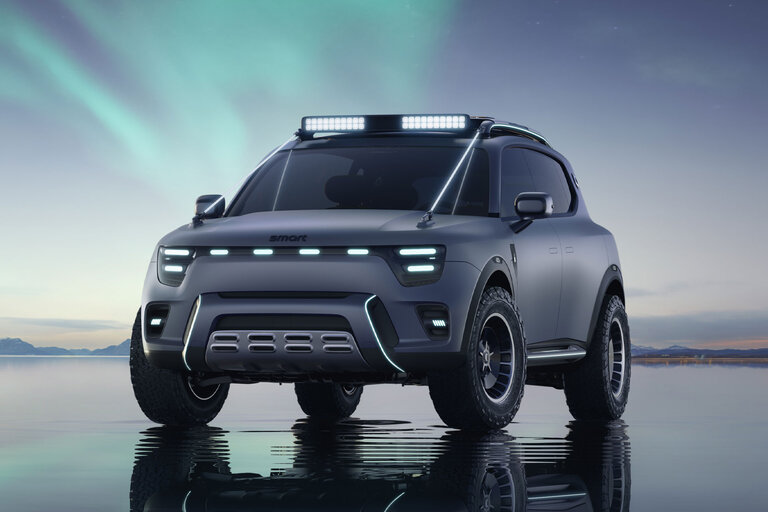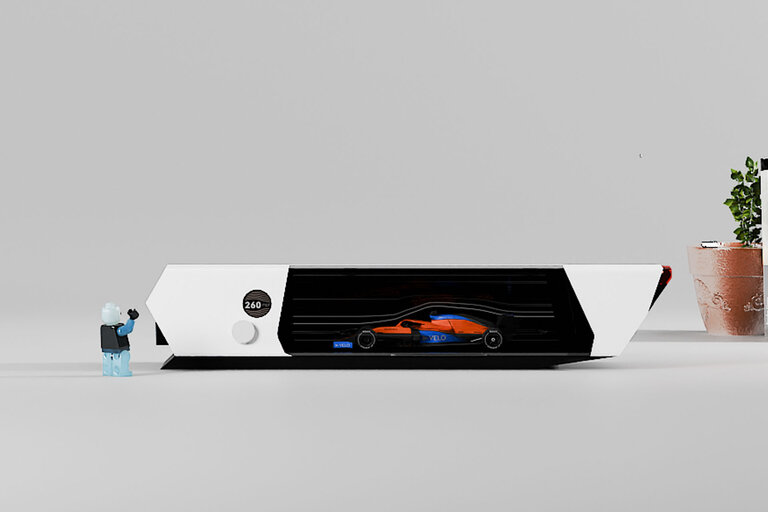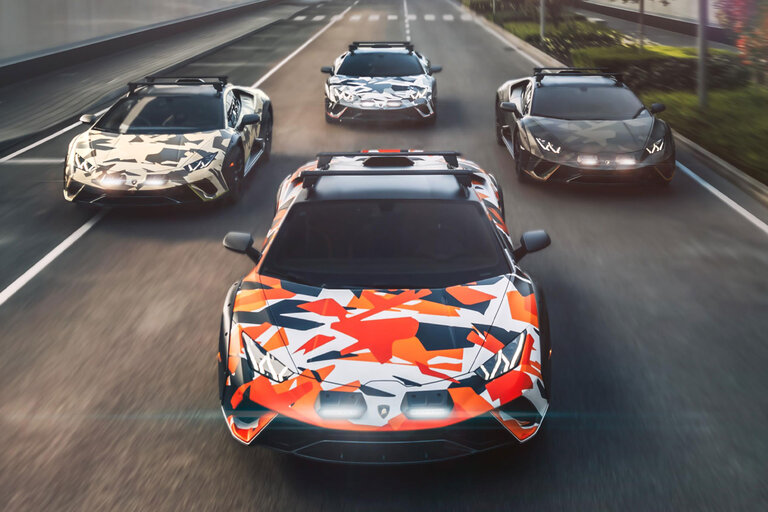
- News of planned electric-vehicle battery plants has become increasingly common as automakers including Tesla, Ford, General Motors, Hyundai, and others move forward with ambitious EV plans.
- The latest is VW, which announced plans to open six battery-cell production plants starting with Salzgitter, or project ‘SalzGiga,’ which it calls “the blueprint” for the six total battery plants it plans to open.
- The first plant will start production in 2025 and is meant to supply battery needs for about 500,000 EVs once up and running.
Volkswagen Group held a “symbolic groundbreaking ceremony” this week for what it calls SalzGiga, the first of six identical battery-cell production plants it expects to build in Europe and North America over the rest of the decade. The new plant, with planned capacity up to 40 gigawatt-hours, will supply roughly half a million electric vehicles. It will start production in 2025.
The cell plant will be operated by PowerCo, a VW Group subsidiary for battery manufacturing established in January. Ultimately, VW expects to build 240 GWh of battery production capacity for up to three million EVs by 2030.
VW Follows Tesla, BYD, GM
In doing so, VW follows in the footsteps of Tesla, BYD, General Motors, and other makers. Tesla has Gigafactories for cells and/or vehicles up and running in Reno, Nevada; Austin, Texas; Berlin, Germany; and Shanghai, China, totaling up to 150 GWh at full tilt. More are on the drawing board. CEO Elon Musk first cited the need for a “gigafactory” to build huge volumes of cells back in November 2013, as Tesla still struggled to ramp up its Model S production.
Chinese maker BYD actually started as a battery company in 1995, then branched into vehicles in 2003 after acquiring a small Chinese automaker. At first it sold only cars with internal-combustion engines, then added plug-in hybrids. It built its last car without a plug this past March.
Similarly, GM plans five joint-venture battery factories with its longtime cell partner LG Energy Solutions. The first, in Lordstown, Ohio, should start production this year. Two more sites have been announced, in Spring Hill, Tennessee, and Lansing, Michigan. All will provide cells to a growing number of EVs planned for the company’s Ultium platform. Cells for the currently low volume of GMC Hummer EV and Cadillac Lyriqs are now produced on a small pilot-production line operated by the partners in Michigan. Total capacity across the five will be roughly 150 GWh.
As of this year, BYD sells more plug-in vehicles (both battery-electric and plug-in hybrid) than even Tesla—let alone GM—so VW Group is coming from behind. In part, this is because of the political sensitivity of its massive employment to the German economy. A substantial share of the company is held by the state of Lower Saxony, and Works Council (union) representatives sit on the company’s board.
Assuaging Employee, Political Concerns
The location of VW’s first “giga” factory thus carries great symbolic importance. It is being built at Salzgitter, the massive plant where more than 6800 employees now assemble roughly a million combustion engines a year. The site has built more than 62 million engines to date, ranging from four to 16 cylinders. But with many markets committed to ending sales of vehicles with tailpipes by 2030 or 2035, those jobs are clearly threatened—so VW put what it calls its global center for battery development in the heart of Lower Saxony, at this plant. Thursday’s carefully choreographed event, attended by employees, executives, and dignitaries alike, was intended to underscore the message that jobs would be preserved.
Many dignitaries, including German Chancellor Olaf Scholz, spoke at the SalzGiga ceremony. One was the premier of Lower Saxony, Stephan Weil, who used automotive history in an analogy for this latest evolution of Salzgitter. He noted the 1970 Volkswagen K70, the first VW in history to be powered by a water-cooled inline-four-cylinder engine—driving its front wheels, even—had been built at the Salzgitter plant. It presaged the company’s subsequent, successful Golf and Passat.
That analogy was unexpectedly apt, since the intellectual property represented by the K70 hadn’t been developed by VW at all. The model came from NSU, which VW acquired after the company was effectively bankrupted by the development and warranty costs of its Wankel rotary–powered Ro80 luxury sedan.
Similarly, VW does not have sole ownership of the cell chemistries that will go into the large volumes of batteries fitted to the millions of EVs it will be producing by the end of this decade. Tesla partnered with Panasonic and GM partnered with LG, but VW notably omitted any discussion of its cell partners from today’s ceremony.
Instead, while CEO Diess proclaimed the company is “bringing the leading-edge technology of the future to Germany,” today the source of that technology remains predominantly in Asia.
This content is imported from {embed-name}. You may be able to find the same content in another format, or you may be able to find more information, at their web site.
This content is created and maintained by a third party, and imported onto this page to help users provide their email addresses. You may be able to find more information about this and similar content at piano.io
#Volkswagen #Open #SalzGiga #Battery #Plants
Source link







